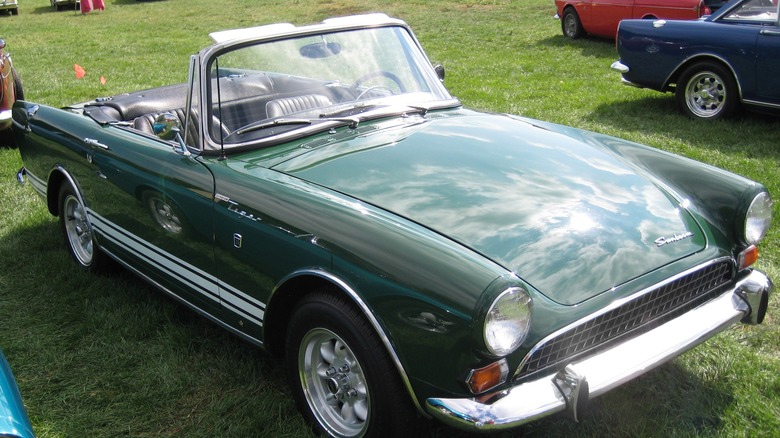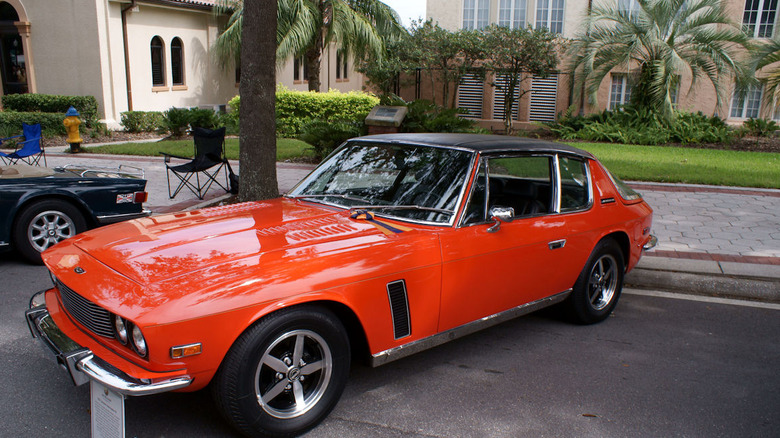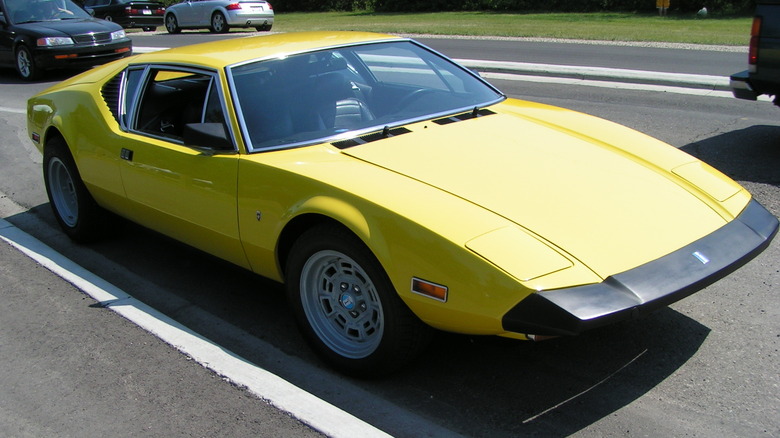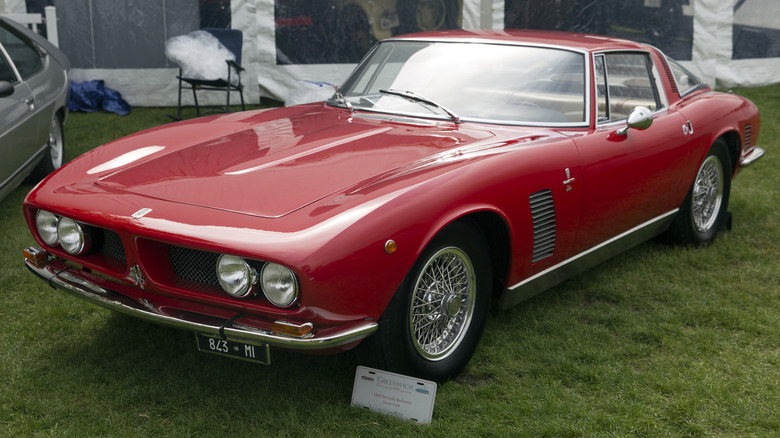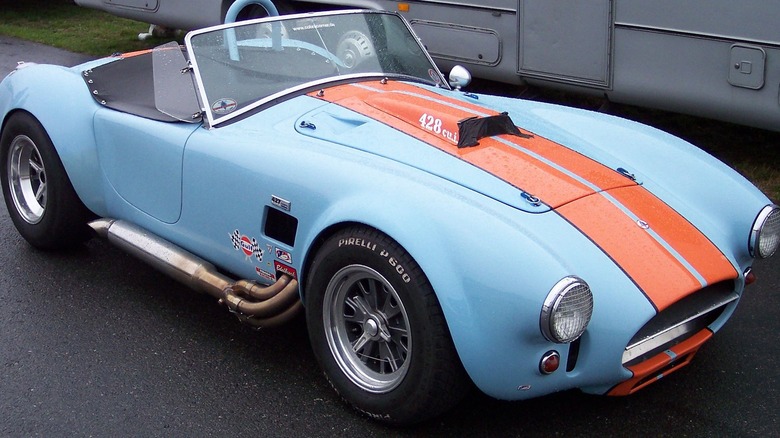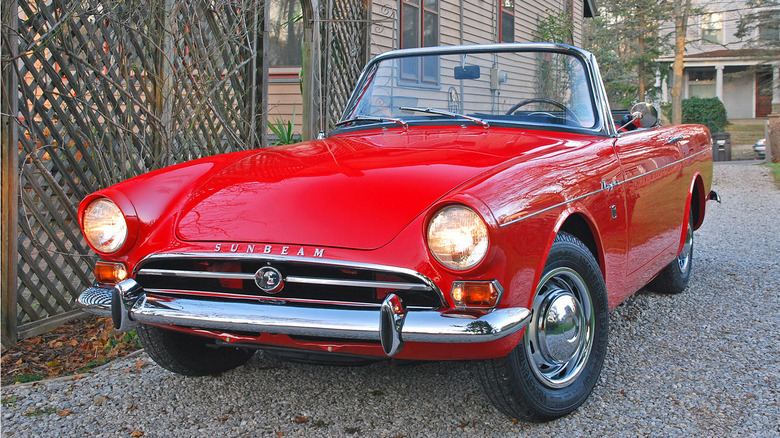5 European Cars With American Muscle Car Engines
The 1949 Oldsmobile Rocket 88 and 1964 Pontiac GTO are generally regarded as the first American muscle cars. The era they spawned saw many other carmakers strap powerful V8 engines onto a lightweight chassis in an effort to make driving more enjoyable. The muscle car era fizzled when environmental regulations and corporate average fuel economy standards emerged in the early and mid '70s. Many European manufacturers heard the siren song of beefy V8s and used U.S.-made motors in their own cars, which had a traditional reputation for emphasizing style and handling over power.
Some of these Euro-American mashups had long runs and remain beloved today, while others were engineering disasters that could barely stay on the market for a few years. The one thing they all had in common was the ability to induce a rush of adrenaline when being driven. Here are five European cars with American muscle car engines that will make your heart pound in the driver's seat, but might also drain your fuel and repair budgets.
[Featured image by John Lloyd via Wikimedia Commons|Cropped and scaled|CC-By 2.0]
Jensen built two distinct Interceptors
British brothers Richard and Alan Jensen founded Jensen Motors in 1934 and built their first car the following year. The first Interceptor came along in 1949, powered by an Austin inline six-cylinder engine that put out 132 horsepower. The original Interceptor stayed in production through 1957, and the Jensen brought the nameplate back in 1967, pasting it on a car with an Italian-made body and Chrysler V8 engine. It was designed in tandem with the FF, an updated version of the CV-8 with a Ferguson all-wheel drive system. The CV-8, new Interceptor, and FF all featured a Chrysler 383 cubic inch powerplant, although the FF and Interceptor versions were tuned down to 325 horsepower from the CV-8's 330.
For the Mark III Interceptor that debuted in 1971, Jensen began using Chrysler's 440 cubic inch V8. Topped with a four-barrel carburetor, that engine produced 305 horsepower, but the "six-pack" option with three two-barrel carbs upped that to an astonishing 385 horses and 490 lb-ft of torque. On a car that weighed just a couple of suitcases over 4,000 pounds, that was sufficient to get from 0 to 60 miles per hour in six seconds flat and to a top speed of 145 miles per hour. The model lasted through 1976, when logistical and financial troubles spelled the end for Jensen Motors.
[Featured image by Valder137 via Wikimedia Commons|Cropped and scaled|CC-By 2.0]
The De Tomaso Pantera was fast and expensive
Former race driver Alejandro De Tomaso fled Juan Peron-led Argentina for Italy and established a car company in Modena in 1959. De Tomaso Automobili began as a race car constructor, but built its first road-going model in 1963. That was the Vallelunga, which had a tube chassis and 1.5-liter Ford I4 engine. De Tomaso first used a bigger Ford motor in the Mangusta (mongoose), placing a 302-inch V8 behind the seats.
The Mangusta was in production from 1966 through 1971, when the Pantera (panther) arrived to take its place. The new model also had a mid-engine layout, but used Ford's Cleveland 351 cubic inch V8 instead of the 302. Although it was built in De Tomaso's Modena, Italy factory, the Pantera was aimed at the American market and sold through stateside Lincoln-Mercury dealers.
The 266-horsepower V8 could hustle the Pantera from 0-60 in 6.6 seconds, just a tenth slower than the Ferrari 308. Despite that, Ford dealers moved less than 6,000 Panteras in its first three years on the market. That was likely due to the base price of about $10,000, which equals close to $80,000 today. The Pantera's fuel efficiency of about 13.2 miles per gallon didn't help either, especially with an oil crisis looming. The Pantera managed to survive in the American market through 1975, and De Tomaso continued to sell the model in Europe and Australia through 1993.
[Featured image by dave_7 via Wikimedia Commons|Cropped and scaled|CC-By 2.0]
The Iso Grifo Series II had a 454-inch V8
The Iso Grifo was the result of another partnership between an Italian automaker and American engine suppliers. Iso founder Renzo Rivolta began the company as a producer of refrigerators and HVAC equipment before pivoting to motor vehicles, at first by building scooters and small motorcycles. Iso's first car was the 1954 Isetta, an ultra-compact powered by a two-cylinder, ten horsepower motorcycle engine. The car was so successful that Rivolta was able to sell manufacturing rights to BMW, which provided him the funds to develop grand touring cars. His first effort in that realm was the 1962 Rivolta GT coupe, which had a 327 cubic inch Corvette V8 that gave it a top speed of 145 miles per hour. Iso next displayed road and racing versions of the Grifo at the 1963 Turin Motor Show and put the model into production in 1965.
Initially, the Grifo was powered by a 330 cubic inch Corvette V8 that produced between 300 and 350 horsepower. For the 1968 model, Iso added a hood scoop to accommodate a tri-power 427 inch V8. When the Grifo Series II appeared in 1970, it had a beastly 454-inch V8 that produced nearly 400 horsepower and whipped the car from 0-60 in 5.2 seconds. Sadly, the oil crisis forced Iso to swap that monster for Ford's small-block 351-inch V8 for the 1972-74 model years, but that 330-horsepower motor was still capable of providing a six second 0-60 time.
[Featured image by Mr. Choppers via Wikimedia Commons|Cropped and scaled|CC-By 3.0]
The AC Cobra is a true automotive industry icon
Carroll Shelby was a flight instructor and race driver before health issues ended his on-track career in 1960. Shelby went on to be one of the most important designers of new car models in history, and one of his first creations has endured as an industry legend. Boutique British manufacturer AC cars already had met with success at the 24 Hours of LeMans in the late '50s with the Ace roadster, so when Shelby sought a lightweight chassis in which to drop a V8 engine, AC came to mind. Shelby and AC partnered up in late 1961, and Shelby set about hunting down a suitable powerplant for their new venture. Shelby was at first rebuffed by General Motors, who didn't want to contribute to a car that might pull sales away from the Corvette. The intrepid Texan then turned to Ford. The first 75 Cobras built got Ford's 260 cubic inch V8, and the next 51 made were graced with a 289-inch engine. Later versions got 390 or 427 inch V8s from Ford; the latter produced 425 horsepower in its standard configuration and an unholy 485 horses in competition tuning.
AC Cobras got "Powered by Ford" fender badges, and the model was sold stateside under the Shelby-American label. 427-powered Cobras are among the fastest cars ever made, with a 0-60 time of under four seconds, and typically sell for over $1 million.
[Featured image by Stahlkocher via Wikimedia Commons|Cropped and scaled|CC-By 3.0]
The Sunbeam Tiger has a lot in common with the Cobra
For those of you who can't scrape together enough spare change to pick up a Shelby Cobra, there's a more accessible alternative that shares some of the Cobra's development history. The British Rootes group had some success with the Sunbeam Alpine roadster and fastback coupe beginning in 1954, but a U.S.-based sales manager named Ian Garrad envisioned replacing the Alpine's 1.7-liter I4 with a V8. At the time, his father Norman ran Rootes Competition along with Shelby and driver Ken Miles, so a team was formed to work on Ian's brainstorm.
He sent an Alpine chassis to Shelby's California workshop, where it was outfitted with a 260-inch Ford V8 and automatic transmission before getting sent back to England.
Jensen Motors was enlisted to build the Tiger using new bodies from Pressed Steel and Ford powertrains imported through the company's industrial arm. 6,450 Tigers were produced between 1964 and 1967, when a Mk II version with Ford's 289-inch Windsor V8 was released. That 200-horsepower engine was capable of getting the Tiger to 60 miles per hour in 6.8 seconds. While that put it well behind its cousin the Cobra, it was still faster than the 289-powered 1967 Mustang.
Classic.com lists 155 Tiger sales in the past five years, at an average price of about $60,500, but if you insist on a Mk II, expect to pay over $100,000.
[Featured image by Steve Brown via Wikimedia Commons|Cropped and scaled|CC-By 2.0]
